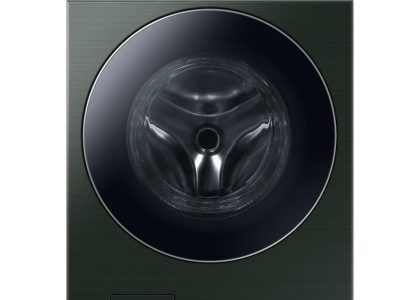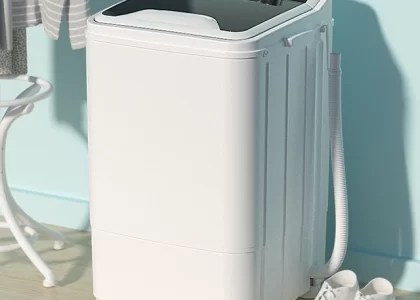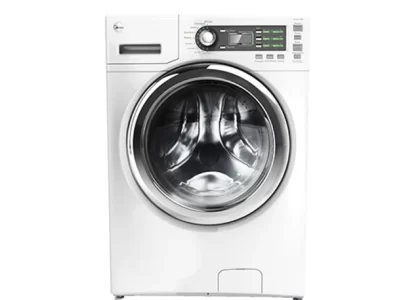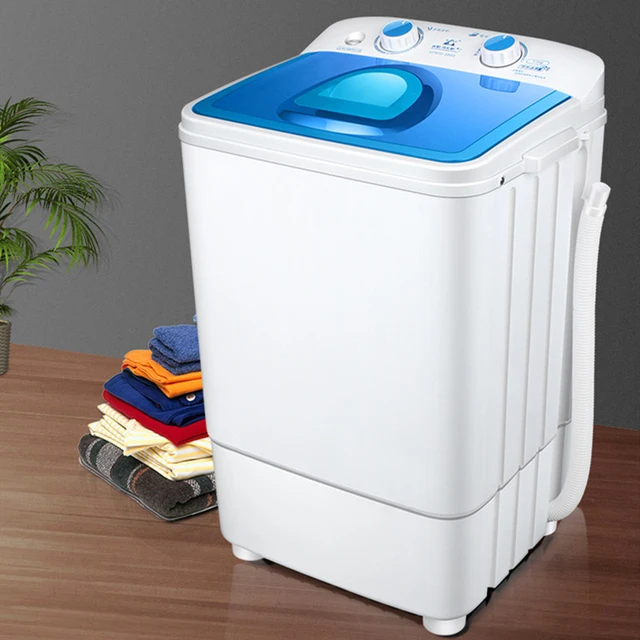 Introduction:
Introduction:
A washing machine that won’t spin can be a frustrating issue to deal with. When your machine fails to spin, it can leave your clothes soaked and require further attention to fix the problem. In this comprehensive guide, we will explore the common causes of a washing machine not spinning and provide troubleshooting tips and solutions to help you identify and resolve the issue. By following these guidelines, you can get your washing machine back in working order and ensure your laundry comes out clean and dry.
 Some common types:
Some common types:
There are several types of washing machines available on the market. Here are some common types:
Top-Loading Washing Machines:
These machines have a vertically positioned drum and a lid on top for loading and unloading clothes. They are typically more affordable, take up less space, and are easier to load and unload compared to front-loading machines. However, they generally use more water and energy.
Front-Loading Washing Machines:
Front-loading machines have a horizontal drum and a door on the front for loading and unloading clothes. They are known for their efficiency, using less water and energy compared to top-loading machines. They often have larger capacity and provide a gentler wash cycle. However, they can be more expensive and may require more bending or kneeling to load and unload.
High Efficiency (HE) Washing Machines:
HE machines are designed to use less water and energy, making them more environmentally friendly and cost-effective in the long run. They can be either top-loading or front-loading machines.
Portable Washing Machines:
Portable washing machines are smaller and more compact, making them suitable for small spaces or for those who frequently move. They are typically top-loading machines and require manual filling and draining of water.
All-in-One Washer/Dryer Combo:
These machines combine both washing and drying functions in a single unit. They are convenient for those with limited space or who prefer the convenience of a single machine for both tasks. However, they may have smaller capacity and longer drying times compared to standalone dryers.
Smart Washing Machines:
These machines are equipped with advanced technology, including Wi-Fi connectivity and smartphone integration. They allow users to control and monitor the washing process remotely, receive notifications, and access additional features or settings.
These are just a few examples of the types of washing machines available. It’s important to consider factors such as capacity, efficiency, features, and budget when selecting the right type of washing machine for your needs.
 Disadvantages associated with this issue:
Disadvantages associated with this issue:
When a washing machine won’t spin, it can indicate several potential hazards and drawbacks. Here are some risks and disadvantages associated with this issue:
Incomplete Cleaning:
The spinning action of a washing machine helps to remove dirt, detergent, and water from the clothes during the rinse and spin cycles. When the machine won’t spin, the clothes may not undergo sufficient agitation and wringing, resulting in incomplete cleaning. This can leave behind residues, stains, or detergent buildup on the clothes.
Excessive Moisture:
Without the spinning action, excess water may remain in the clothes after the wash cycle. This can lead to longer drying times, potential mildew or mold growth, and a higher risk of unpleasant odors developing in the clothes.
Time and Energy Waste:
When a washing machine won’t spin, it often requires extra cycles or manual wringing to remove excess water from the clothes. This can result in wasted time, energy, and resources, as additional washing or drying cycles may be necessary to achieve satisfactory results.
Potential Damage to Clothes:
The absence of spinning action may cause clothes to tangle, bunch up, or become unevenly distributed in the washing machine. This can lead to potential damage such as fabric stretching, tearing, or pilling.
Malfunctioning Components:
A washing machine not spinning can be an indication of underlying issues with components such as the motor, belt, transmission, or control board. If left unresolved, these issues can worsen over time and potentially lead to further damage or a complete breakdown of the machine.
It is essential to address the problem of a washing machine not spinning promptly to mitigate these hazards. Troubleshooting the issue, checking for any blockages or obstructions, and ensuring proper maintenance of the machine can help identify and resolve the underlying cause. Consulting a professional technician may be necessary for more complex repairs or component replacements.
 Power and Connection Issues:
Power and Connection Issues:
Power Supply:
Check if the washing machine is properly plugged into a functioning power outlet.
Ensure there is power running to the outlet by testing it with another appliance.
Circuit Breaker:
Check the circuit breaker or fuse box to see if the circuit serving the washing machine has tripped or blown.
Reset the breaker or replace the fuse if necessary.
Door or Lid Switch:
Verify that the door or lid of the washing machine is securely closed.
The machine won’t spin if the switch that detects the door/lid closure is faulty or misaligned.
Load Imbalance and Overloading:
Load Distribution:
Distribute the clothes evenly in the washing machine to prevent an imbalance during the spin cycle.
Unevenly distributed laundry can cause the machine to detect an imbalance and halt the spinning process.
Overloading:
Avoid overloading the machine with excessive laundry.
Overloading puts strain on the motor and suspension system, leading to the machine not spinning properly.
Faulty or Malfunctioning Components:
Drive Belt:
Inspect the drive belt, located at the back of the machine, for signs of wear, damage, or detachment.
A broken or loose drive belt will prevent the machine from spinning.
Motor Coupling:
Check the motor coupling, located between the motor and transmission, for signs of damage or wear.
A worn or broken motor coupling will inhibit the spinning action.
Lid Switch Assembly:
Examine the lid switch assembly for any damage or malfunction.
A faulty lid switch will prevent the machine from spinning, as it acts as a safety mechanism.
Drain Pump:
Inspect the drain pump for clogs or blockages.
A clogged pump can cause the machine to stop spinning to prevent water from overflowing.
Error Codes and Control Panel Settings:
Error Codes:
Refer to the washing machine’s manual to identify any error codes displayed on the control panel.
Error codes can provide insight into the specific issue preventing the machine from spinning.
Control Panel Settings:
Ensure that the washing machine’s control panel settings, such as the spin speed and cycle selection, are appropriately configured.
Adjust the settings as needed to ensure the machine is set to spin.
Maintenance and Care:
Clean the Filter:
Clean the filter regularly to remove any debris or lint that may obstruct the spinning action.
Refer to the machine’s manual for specific instructions on locating and cleaning the filter.
Tub Clean Cycle:
Run a tub clean cycle periodically to remove built-up residue, dirt, and detergent.
A dirty tub can affect the machine’s performance, including the spinning action.
Professional Assistance:
Manufacturer’s Support:
If troubleshooting steps fail to resolve the issue, consult the washing machine’s manual for manufacturer-specific troubleshooting tips.
Contact the manufacturer’s customer support for guidance or to schedule a service appointment if necessary.
Professional Repair:
If the problem persists or requires technical expertise, consider contacting a professional repair technician.
A technician can diagnose and repair any mechanical or electrical issues that may be causing the machine not to spin.
 Conclusion:
Conclusion:
A washing machine that won’t spin can be a frustrating problem, but by following these troubleshooting tips and solutions, you can address the issue and get your machine back to optimal working condition. From power and connection issues to load imbalances, faulty components, and maintenance, these common causes can often be resolved with some simple steps. Remember to consult your machine’s manual and seek professional assistance if needed. By addressing the problem promptly, you can ensure your laundry comes out clean, dry, and ready for use.




